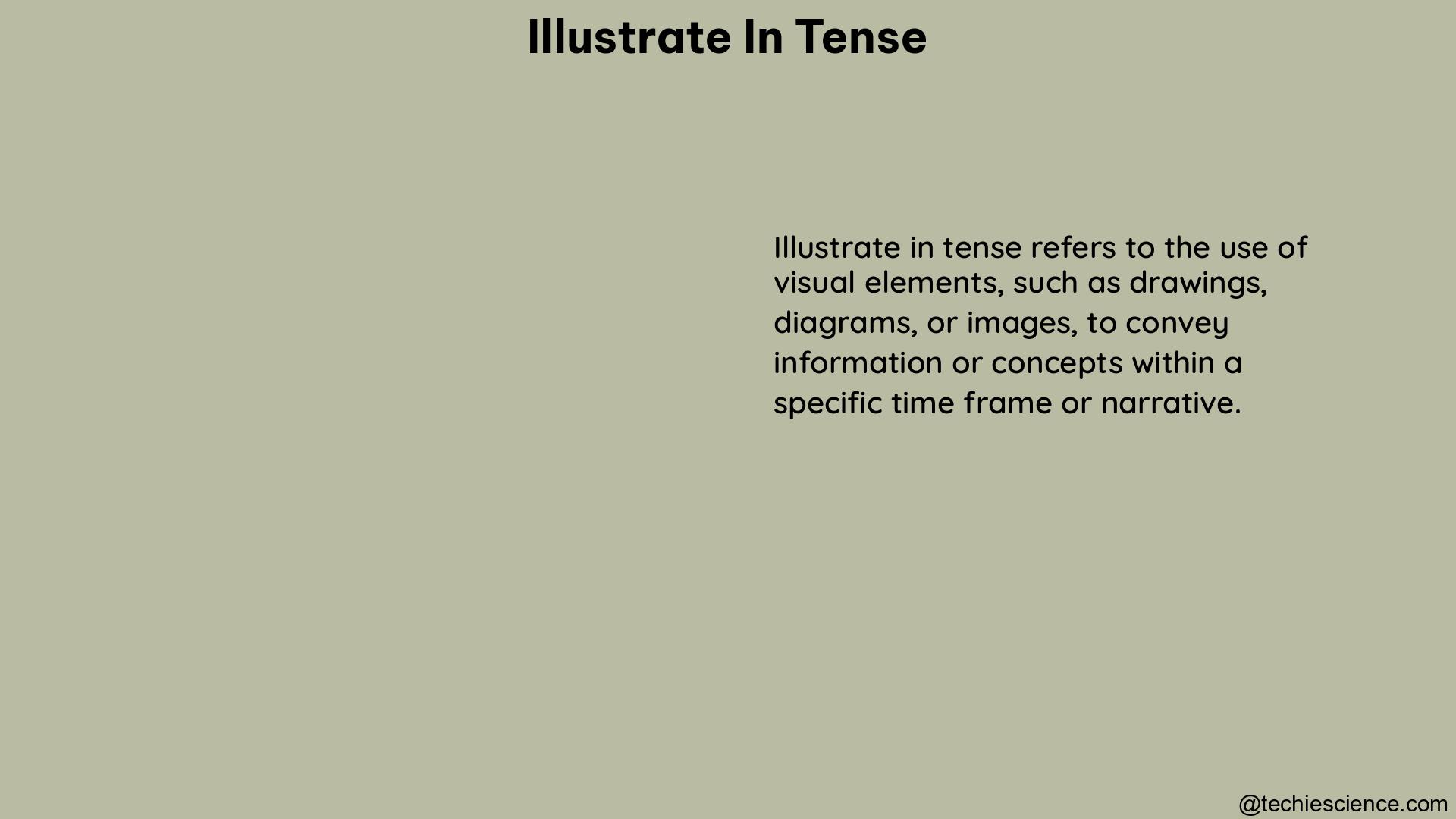The verb “illustrate” is a versatile and essential part of the English language, used to describe the act of creating visual representations or explanations. Understanding the various tenses and forms of this verb is crucial for effective communication, writing, and language proficiency. In this comprehensive guide, we will delve into the intricate details of conjugating “illustrate” and explore its grammatical specifications, providing you with a valuable resource for mastering this essential verb.
Present Tense
The present tense of “illustrate” follows a standard conjugation pattern:
| Person | Singular | Plural |
|---|---|---|
| First | I illustrate | We illustrate |
| Second | You illustrate | You illustrate |
| Third | He/She/It illustrates | They illustrate |
Examples:
– “I illustrate the key concepts in my presentations.”
– “You illustrate the process step-by-step for better understanding.”
– “She illustrates the characters in her children’s book.”
– “We illustrate the company’s products in our marketing materials.”
– “They illustrate the historical events in the museum exhibit.”
Past Tense

The past tense of “illustrate” is formed by adding the suffix “-ed” to the base form of the verb:
| Person | Singular | Plural |
|---|---|---|
| First | I illustrated | We illustrated |
| Second | You illustrated | You illustrated |
| Third | He/She/It illustrated | They illustrated |
Examples:
– “I illustrated the concept during the lecture yesterday.”
– “You illustrated the instructions clearly for the students.”
– “The artist illustrated the cover of the novel.”
– “We illustrated the company’s growth in the annual report.”
– “They illustrated the scientific principles in the textbook.”
Past Participle
The past participle of “illustrate” is “illustrated” and is used in perfect tenses and the passive voice:
- “The book has been illustrated by a renowned artist.”
- “The scene had been illustrated in great detail before the presentation.”
- “The new product will have been thoroughly illustrated in the marketing campaign.”
Present Participle
The present participle of “illustrate” is “illustrating” and is used in continuous tenses and gerunds:
- “I am illustrating the key points in my presentation.”
- “They were illustrating the historical events for the museum exhibit.”
- “Illustrating the process step-by-step is essential for understanding.”
Perfect Tenses
The perfect tenses of “illustrate” are formed using the auxiliary verb “have” and the past participle:
- Present Perfect: have/has illustrated
- Past Perfect: had illustrated
- Future Perfect: will have illustrated
Examples:
– “The artist has illustrated several books this year.”
– “By the time they arrived, the teacher had illustrated the entire concept.”
– “By next year, the team will have illustrated the company’s products in a new marketing campaign.”
Continuous Tenses
The continuous tenses of “illustrate” are formed using the auxiliary verb “be” and the present participle:
- Present Continuous: am/is/are illustrating
- Past Continuous: was/were illustrating
- Future Continuous: will be illustrating
Examples:
– “The artist is illustrating the cover of the book right now.”
– “They were illustrating the historical events for the museum exhibit last week.”
– “Next month, the team will be illustrating the new product line for the upcoming trade show.”
Other Forms
- Gerund: illustrating
- “Illustrating the process is crucial for understanding.”
- Infinitive: to illustrate
- “The goal is to illustrate the concept clearly.”
Advanced Hands-on Details
- Passive Voice:
- “The book was illustrated by a renowned artist.”
-
“The scientific principles were illustrated in the textbook.”
-
Reflexive Form:
- “The artist illustrated herself in the painting.”
- “The students illustrated themselves in the project.”
Theoretical Explanation
The conjugation of “illustrate” follows the standard pattern for regular verbs in English. The present tense is formed by adding the suffix “-s” to the third-person singular, while the past tense and past participle are formed by adding the suffix “-ed” to the base form. The present participle is created by adding the suffix “-ing” to the base form.
The perfect tenses are constructed using the auxiliary verb “have” and the past participle, while the continuous tenses are formed using the auxiliary verb “be” and the present participle. This consistent and predictable conjugation pattern makes “illustrate” a straightforward verb to master, allowing for clear and effective communication.
Reference Links
- https://www.wordreference.com/conj/enverbs.aspx?v=illustrate
- https://simple.wiktionary.org/wiki/illustrates
- https://en.bab.la/conjugation/english/illustrate

Hi…..I’m a graduate with a Bachelor’s degree in English Literature. I wish to do a Masters in the same field someday and continue my career in Academia.
Let’s connect through LinkedIn: